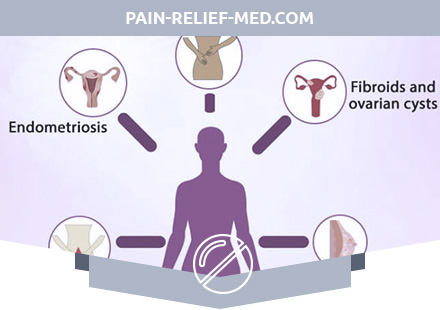What is Excess Estrogen?
Currently, all of us, both women and men, are experiencing an overabundance of estrogen.
Causes of Excess Estrogen
Contrary to prohibitions, estrogens are used in livestock feed. Through hormone consumers, estrogen infects groundwater. A person involuntarily consumes estrogen analogues contained in plastics, pesticides, etc.
Symptoms Excess Estrogen
If an excess amount of estrogen circulates in the body, which is most often complicated by a certain depletion of the liver (which it just does not have to process except for excess hormones throughout human life, and even with the current state of ecology!), Then we are talking about an excess, or the so-called estrogen dominance. It leads, accordingly, to a lack of progesterone, since the female body is trying to maintain balance. This may be accompanied (primarily in the premenstrual period) by the following phenomena:
- a feeling of tension in the chest;
- hypersensitivity of the nipples;
- puffiness, weight gain;
- depressed state;
- migraine headaches;
- unhealthy veins, heaviness in the legs;
- inability to conceive due to lack of egg implantation;
- increased blood pressure;
- the occurrence of fibroids;
- the appearance of ovarian and breast cysts;
- hair loss;
- acne;
- lack of sexual desire;
- spotting bleeding;
- shortening the cycle;
- cold hands or feet.
Excess estrogen causes ovulation disorders in women, whose weight is 20% or more higher than normal. Excess estrogen acts in the same way as estrogen, which enters the body from the outside. It violates the usual course of monthly hormone fluctuations, which provide timely ovulation, prepare the uterus for pregnancy, and, if the pregnancy did not take place, cause uterine endometrial rejection.
In overweight women, excess estrogen can lead to proliferation of the uterine mucosa (endometrium), however, since the hormonal background is disturbed, the mucosa is not rejected completely.
As a result, the menstrual cycle is not only disrupted, the growth of the endometrium (uterine mucosa) can cause hyperplasia ─ a precancerous disease.
The risk of developing uterine cancer directly depends on excess weight, and 10 times more in women, whose weight is 25 kg more than ideal.
A similar mechanism explains why the incidence of breast cancer in 50-year-old women weighing more than 80 kg is 48% higher than their counterparts with normal weight.
And another figure that negatively reflects the effect of excess weight on health: 30% of women who are diagnosed with polycystic ovary syndrome suffer from varying degrees of obesity. Moreover, if the girl on the eve of puberty was overweight, then the likelihood of developing polycystic ovary syndrome is also higher.
Diagnostics Excess Estrogen
Have you discovered some of these symptoms? First of all, think about the environmental dominance (overabundance) of estrogen. This also applies to the premenopausal period, that is, the age of “over 40”, when many women complain of similar ailments. Do not forget to consult a gynecologist-endocrinologist, he will help correct hormonal changes.

